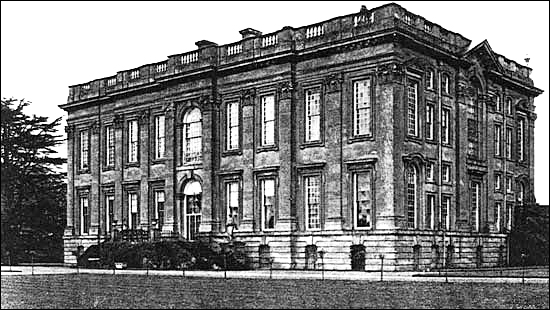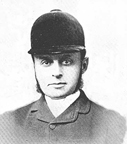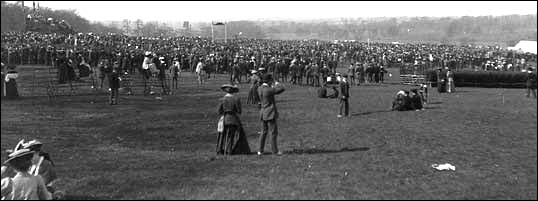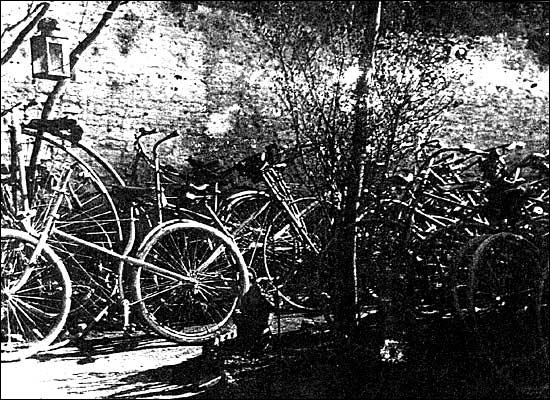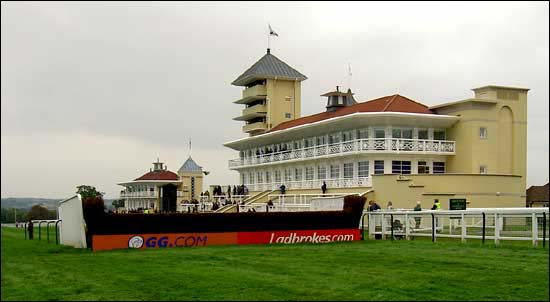|
Easton Neston, Towcester, Northamptonshire
|
|||||||||||
To see a map of Easton Neston, click here In December 1875 the ex-King and Queen of Naples came to England for fox-hunting and took up residence in “Park View” where she would be in the heart of the Grafton Hunt district. Park View was on the south side of Towcester, Northamptonshire near the Folly public house on the Watling Street. The lodge house and the stables are still in existence. Her Majesty was a fearless rider and she had ridden at the head of an army and had been under fire but she had not been in the hunting field. Mr Frederick Allen gave her many lessons in the art and he provided her with the necessary hunters: two chestnut horses called Pilot and Pickles. Her pilot in the field was Mr Elliott and he reported that she did not find any fences too high, but, she did not want to watch the kill when the hounds caught a fox. She became passionately fond of hunting and said how much her sister would also enjoy it and in the spring she announced that the Empress of Austria, her sister, intended to visit England. The ex-King of Naples was not a rider of much experience but he eventually joined in and was indebted to Lady Knightley for showing him the sport in the Fawsley area. The Ex-Queen hunted for two seasons and part of a third and then, owing to her health, was obliged to retire. She had been fond of chamois shooting and often talked of her experiences tracking the wary animals. She had two pictures painted of them on their native mountains by Benno Adom which she later sent to Mr Elliott for the assistance he had given her. In March 1876, Her Imperial Majesty, the Empress of Austria, paid a visit to England and rented Easton Neston House near Towcester, with its fine stabling for her horses. The following account was reported in the Northampton Herald on 6.3.1876: TOWCESTER Arrival of the Empress of Austria at The Towcester Station On the report being authenticated on Monday morning that Her Imperial Majesty the Empress of Austria and suite were expected to arrive by the mid-day train, there was no small amount of anxiety manifested to accord the Royal visitors a hearty and becoming reception. Superintendent Norman was at once on the alert, marshalling his official staff, and with other assistance the little station shortly presented a gay appearance. An arrangement had been made for the accommodation of ladies in the reception hall, an opportunity that was quickly taken advantage of, the space behind the barrier being speedily filled. On the platform side of the station a number of gentlemen were allowed standing room, the mass of onlookers being placed on the outer side of the barricades. Baron Orczy was in waiting to receive Her Imperial Majesty. The train which was a little behind time, at length arrived. It consisted [the special part] of a saloon and five 1st class carriages. And was accompanied by the Railway Superintendent, Mr Porter. Her Imperial Majesty was attended by the Countess Festetics and Baron Nopsca, grand maitre of the Empress’s household. Her Imperial Majesty was shown to her carriage by Baron Orczy, and was driven immediately to Easton Neston house, formerly the seat of the late Earl of Pomfret, where she is expected to remain until the close of the hunting season. The Empress’s hunters are already there. The bells of the old church at Towcester rang out merry peals during the remainder of the day in honour of the event. A number of loyal personages are locating themselves in and about the town, so that Towcester for once in its history promises to be the scene of much festivity. However, she had such a large entourage that some of her personal party had to be accommodated in Towcester. On the 18.3.1876 the Northampton Herald had the following report: FOREIGN NOBILITY The house for many years the residence of the late Thomas Collier, Esq., in this town has just been taken and fitted up by Mr Tennant of the Pomfret Arms Hotel as a temporary abode for the following distinguished personages, viz: Prince Kinsky, Prince Liechtenstein, Prince Auersberg, Countess Henri Larisch, Count Henri Larisch. Mr Tannard has the honour of catering for the noble party. N.B. Thomas Collier was a local doctor who had recently died. His house was opposite the Pomfret Arms Hotel (now The Saracens Head) by the shop of the fishmonger and poulterer that was next to the cross-roads on Watling Street East. The Empress used the pseudonym Countess Hohenembs to avoid publicity but probably to no avail. Her immediate personal staff included Baron Nopcsa who was Master of the Household; Countess Festetics, a lady in waiting; Dr Langyi; a hairdresser; Bayzand, stud groom; Mr Allen, an English man who was her groom in Vienna who had been sent out to Vienna by the ex-Queen to replace Holmes who was getting old; Rudi Lichtenstein, chief Lord High Steward [a very influential man with estates in Moravia]; Counts Hans and Heinrich Larisch, Marshalls of the Court; and Prince Ferdinand Kinsky. Noticeably more Hungarians than Austrians, as was her preference.
One day they were invited for lunch to see their friends Lord and Lady Spencer at Althorp House near Long Buckby. He had met them both in 1874 when they had visited Belvoir Castle. In a letter Lady Spencer wrote to her mother, Lady Augusta Seymour, she tells how the Empress was expected for lunch at 1pm and how at 12 noon when we were quite unprepared to receive her, Spencer had gone to dress in his hunting and I was deciding what to wear when her carriage arrived”. She goes on to describe how a red carpet was just being put down and that the mats in the hall were all topsy turvy. She had rushed downstairs and encountered a very tall, dignified lady in a dark Ulster coat, they went upstairs to the Gallery and Lord Spencer appeared as quickly as he could. She sat a long time with her and her Lady in Waiting before the rest of the party arrived. Her description of the Empress was that she was striking but not as beautiful as expected but says her figure is wonderful and how well she looked on horseback. After lunch they mounted their horses and galloped off to Brington Hill, found a fox and ran it to ground. The Empress was delighted for Captain ‘Bay’ Middleton had been her pilot. Protocol demanded that the Empress should visit Queen Victoria and on Sunday 12 March she agreed to go to Windsor. The Queen told the Bishop of Peterborough not to give a long sermon that day so that lunch would not be delayed. However, as he was due to begin a page boy appeared and told the Queen that the Empress had arrived. Apparently, she stayed for 45 minutes and, refusing lunch, returned to her train to return to London. Perhaps not a much protocol as was desirable. There was a report was in the N. Bucks edition of the Croydon Weekly Standard that told how the Empress had hunted with the Bicester Hounds at Thorpe Mandeville on Saturday, left Banbury station for London where she gave a dinner and stayed the night at Claridges Hotel. She went to church the next morning at Farm Street, Berkeley Square then on to Windsor by train to meet the Queen. After the short visit she left at 2.00pm to return to London but a snow storm caused telegraph poles to fall across the railway lines and the train was forced to stop in Slough. The stationmaster provided a plain lunch of roast beef and claret for her party, in his house, while the line was being cleared; they reached Paddington station at 5.00pm. I wonder how he managed to provide such a repast for all her party. The following day she paid a formal visit to Baron Ferdinand de Rothschild at Leighton House and they rode to Mentmore to visit his stud farm. He had requested the help of the ex-Queen of Naples to help gain recognition in society and so the Empress was probably visiting at her sister's request. However, she would have enjoyed this much more than her formal Windsor visit as she enjoyed seeing and talking about horses with her vast knowledge on the subject. The court in Vienna probably took a very low opinion of her choice of friends, that she had visited a Jewish family, no matter how rich and influential, but had only seen the Queen of England for 45 minutes. Towcester Race Meeting When the Empress stayed in the Isle of Wight in 1874 a steeple-chase meeting was held in her honour with three races for hunt members, farmers and others. Whilst staying at Easton Neston she went by train from Blisworth station to Lamport where a similar race meeting was held by the Pytchley Hunt at Hopping Hill. Earl Spencer had a special pavilion erected and provided a magnificent lunch for his guests. ‘Bay’ Middleton raced in his colours of black, pink hoops and a black cap and was invited to the lunch. The event at Hopping Hill so delighted the Empress she decided to establish a race meeting of her own to be called the Grafton Hunt Steeplechase. A course was laid out in Easton Neston Park and a stand erected for guests. She then sent to Hancock’s, a London jeweller, to make a cup for the winner, and to be called The Hohenembs Cup. To enter the race the horses were to be from the Grafton, Pytchley, Bicester and Mr Selby-Lowndes hunts. The weight to be 13st and the length 3 miles. Bay Middleton entered on a horse called Musketeer. A special marquee was also erected so that all the people who had helped her during her stay could be entertained and the food was ordered from a London caterer. Bay Middleton won the race by 3 lengths which was probably a great joy for the Empress. Two days later she had left for Vienna; Franz Joseph was pleased to have her home again and he paid the cost of her trip of £120,000. Earl Spencer was invited to Gödöllő, their summer palace in Hungary, later that year, as was Bay Middleton. But before she left various gifts were given to local people who had helped her during her stay as this report shows: Imperial Munificence Previous to the departure of the Empress of Austria from Easton Neston, her Imperial Majesty presented a donation of £20 to the funds of the National Schools; to William Whitton Esq. a gold pin; to Mr Frank Beers £30 and a pin; Mr Porter, Traffic Manager of the Northampton and Banbury Railway, shirt studs and sleeve links (diamond); £5 to Mr Stanton, Station Manager; £5 among the porters on the line; to Supt. Norman £5; and £5 amongst the police constables. 8 April 1876 Northampton Herald After the Empress and her party had returned to Austria a meeting was called in Towcester at the Pomfret Arms to discuss the possibility of having a regular steeplechase meeting at Easton Neston Park. The following is a report of the meeting in the Northampton Herald in March 1876:
STEEPLECHASING
A numerously-attended meeting to consider the advisability of having a day’s steeplechasing at Towcester was held at the Pomfret Arms Hotel on Wednesday evening, Mr Oldham in the chair, when it was unanimously resolved on the motion of Mr J W Manning, seconded by Mr Riley, that it was desirable such an event should take place on a day hereafter to be named. The following gentlemen were them appointed a provisional committee: Messrs. J M K Elliott, -Sherwell, J W Ayers, - Riley, - Macdonald. Mr Whitton, at the request of the meeting, consented to act as secretary. It was proposed by Mr Adams, seconded by Mr Riley, that Mr Whitton take steps to ascertain from Lord Charles Fitzroy as to whether the Duke of Grafton’s hunt will patronise the undertaking. Mr Sherwell undertook to guarantee £100 from the visitors of Easton Neston. It was further arranged that a public meeting on the question be held at the Pomfret Arms, on Tuesday evening at 8.30 to receive the committee’s report. March 1876 Northampton Herald When the committee had decided to hold an annual race SirThomas Fermor-Hesketh gave a 51 year lease to hold the Easter Monday races in his park. This was to run from 1877 to 1928. Each year a temporary stand was erected inside the park wall about half way up the London road and is probably why the four sets of double wooden gates are set into the wall in this area. When the lease had expired Sir thomas set up a company called The Towcester Racecourse Ltd and built a permanent standstand and a weighing room. This stand was positioned near the present Grace Stand. Many people in Towcester well remember the excitement of these annual race meetings. Thousands flocked through the town having arrived at the railway station at the north end and walked the mile up the London road to the race course at the south end. Some even arrived on bicycles and penny farthings.
In a letter Mr Stibbert Tuckey wrote to a friend in the 1950s he recalled over half a century of the races. The above photograph was one of his treasured possessions showing bicycles piled up in his backyard in 1887. He said that his father had told him that for the race meetings many of the men used to arrive on penny-farthing machines wearing top hats and tail suits. “ Many left their bicycles in our backyard and then they would pay 6d (2.5p) for a wash and brush-up in the kitchen. A quick swig of whiskey from their flask and they would be off to the races.”
This picture was taken in 1887 and shows piles of various cycles at Rose Cottage, Mr John Tuckey’s house, on the Northampton Road near the cross-roads. Two other local memoirs are from Mr John Jenkinson whose family had various businesses in the town and the Catholic Bishop of Northampton. The former who lived in Chantry House on the market square in Towcester, was reported in 1954 as saying that he could remember the first race in 1877, and that he had been given sweets by the Empress on her 1876 visit when he would have been about 10 years old. The Bishop, Francis Kerrill Amhurst, wrote in his memoirs that in 1875 the King and Queen of Naples (they had been deposed in 1861) took Park View, Towcester, for the hunting season, and of course asked for a priest to say Mass, which in a diocese where nearly every priest was fully engaged, was a request with which there was some difficulty complying. However, on December 16th the Bishop went to Park View, about a mile beyond Towcester, to call upon the King and Queen. “The door was opened, after much ringing, by the housekeeper, who said that, being English, she was sent by the other servants who could not speak it. Prince Rufano not at home. I wrote my name in both the King’s and Queen’s book; they were both out, but I was shown into the drawing-room to the Cavaliere Besio. He and the housekeeper told me how sorry their majesties would be not to have been at home. About a week later the King of Naples returned the visit, coming on foot with the Cavaliere Besio and stayed for some time conversing most amiably.” Neither the Empress of Austria nor her sister Marie Sophia, the ex-Queen of Naples, were to return to the Grafton Hunt but their memory has lasted. In 2005 a new grandstand was built at Towcester racecourse and aptly named ‘The Empress Stand’.
|
|||||||||||
